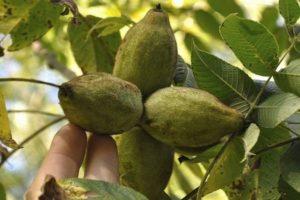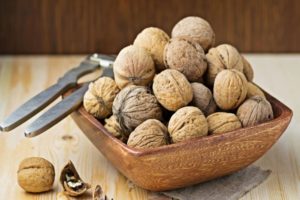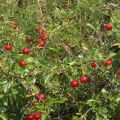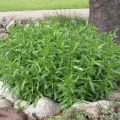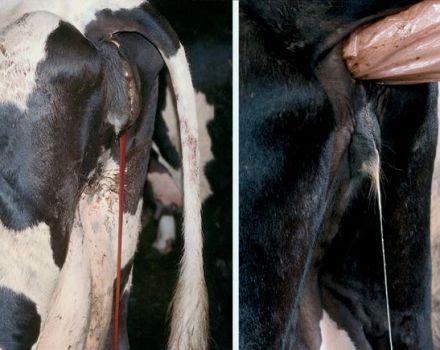Description of the steppe almond, its planting and care, the secrets of agricultural technology
Every gardener tries to decorate his summer cottage with both useful and aesthetically attractive plants. These include steppe almonds, also called "mini sakura". A similar analogy can be seen during the flowering of the shrub, when the almonds are completely covered with delicate pink flowers. However, before planting a plant, it is imperative that you familiarize yourself with the planting and care conditions.
Description and characteristics of steppe almonds
Steppe almond is a spreading one and a half meter shrub with dark green oblong leaves. The plant is thermophilic, and blooms early enough in warm climates (end of January), in moderate temperatures, flowers appear later (end of April).
Flowers have a rich pink color and delicate aroma. The fruits of the steppe bean almond ripen in September, and look like a shaggy base with an edible stone inside.
Planting a plant
Important! The shrub will not survive without sunlight, so it is imperative to plant the plant in open ground, farther from the shade.
It is also required to take into account that the branches of the shrub grow mainly to the side, therefore it is recommended to calculate the planting scheme in advance if several steppe almond plants are planned in one area. On average, there should be at least 4 meters between each bush.
What time to plant
The optimal time for planting steppe almonds will be late autumn (but before the onset of cold weather) or mid-spring, when the temperature regime is fully established, and the degrees in the soil are stable at around 12-15. Such a plant will begin to bear fruit by the fall.
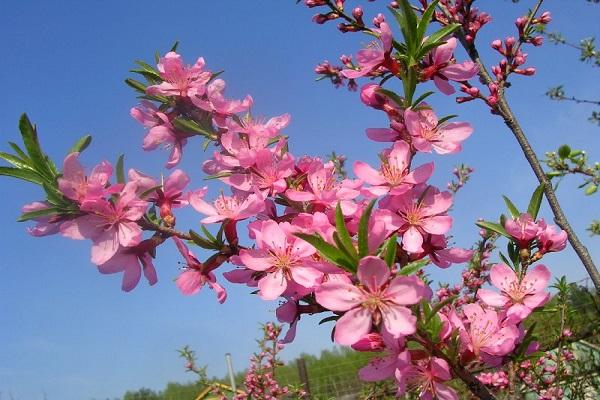
Soil for planting
In order for the shrub to stand out with a brighter flowering, and to increase the yield, it is required to fertilize the soil before planting and then once a year. To do this, use:
- humus;
- animal manure;
- vegetable compost.
It is recommended to take care of creating good drainage in advance, the plant does not tolerate stagnant moisture. It is also required to disinfect the soil with ordinary lime. One shrub will require up to 300 grams.
Preparation of seedlings
When planted in autumn, seedlings do not require special preparation, except for disinfecting the roots. For this, a weak solution of potassium permanganate is used. However, if the plant is planted in spring, the root system of the seedling needs to be treated with a clay mash.The procedure will preserve moisture and prevent almonds from drying out at first.
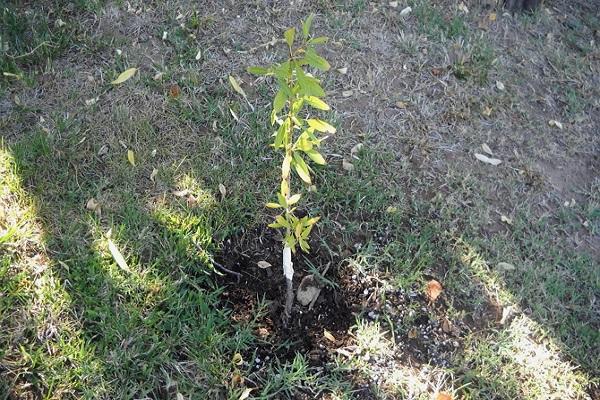
Planting process
Steppe almonds require the creation of special planting conditions, or rather holes:
- the hole is dug out in a square, a little more than half a meter;
- drainage from rubble and sand is laid out on the bottom;
- with fertilized soil, they form a hill and drive a number of support into it;
- the roots are placed around the peaks, without bending the branches;
- all are buried with fed earth.
How to properly care for a bean
Low almond care is not difficult, but requires a certain regimen. It is recommended to focus on soil fertilization and timely watering.
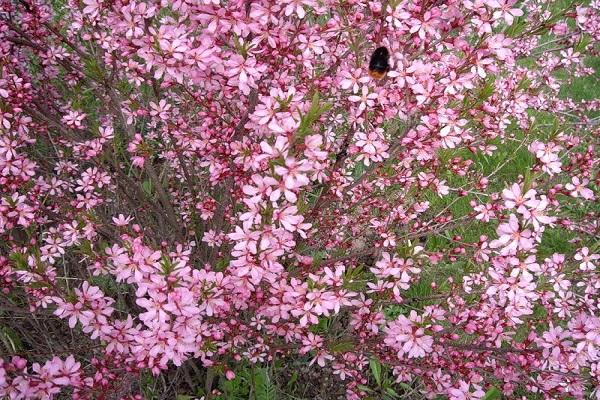
Watering and feeding
Watering steppe almonds is required stably, focusing on the condition of the soil. A slight drying out of the top layer serves as a signal for the next watering. However, it is not recommended to pour more than 10 liters of water at a time. And you need to fertilize twice a year:
- in spring - with nitrogen-based preparations;
- in the autumn - with substances containing phosphorus and potassium.
Almond pruning
Sanitary cleaning of steppe almonds is carried out after the snow melts. The purpose of this pruning:
- get rid of dry, broken and diseased branches;
- create a place for the growth of new young shoots.
After shedding flowers, it is also recommended to prune off excess branches, getting rid of crooked and cross-growing branches. The procedure allows you to thin out the bush a little and achieve a neat shape.
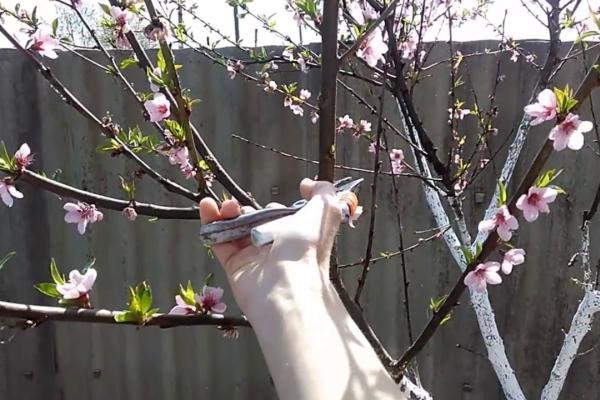
Preparing for winter
Preparation for wintering begins in August. It is required to pinch the ends of the young processes. This allows the shrub to grow more protective wood, which will help it survive even a harsh winter. Often, the plant is covered from above and the roots are wrapped in non-woven material, such as Greentex.
Diseases and pests of steppe almonds
The main pests that attack steppe almonds are:
- leaf roll, Iskra-M helps to get rid of it;
- plum moth, which is also removed by spraying with Iskra-M;
- aphids are very dangerous because they are not easy to detect; Iskra-Bio serves as a means against the invasion;
- plum bark beetle.
There are three main diseases: rust, monilial burn, gray rot. Diseases are eliminated by cutting out branches, Bordeaux liquid or colloidal sulfur.
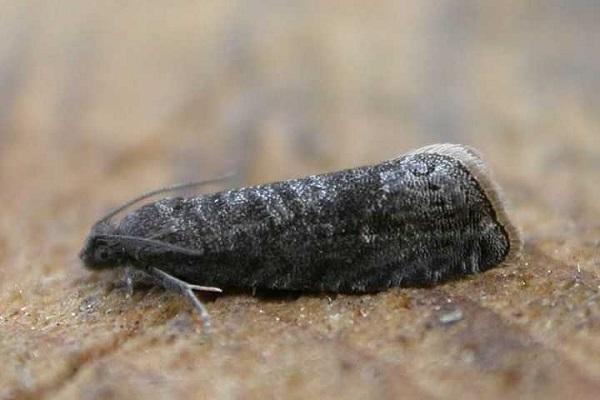
Reproduction
Steppe almonds are considered a versatile plant in terms of reproduction. It is customary to single out five popular methods to increase the amount of culture:
- using seeds;
- by grafting a plant;
- cuttings;
- reproduction by shoots;
- and layering.
Important! It is required to prepare the garden area in advance and get rid of rodents. Otherwise, there is a risk of complete destruction of shrubs or seeds.
Growing from the bone
Gardeners often grow a plant from a seed. It is recommended to lay seeds in the soil in spring, when the temperature regime is fully established. And when the process reaches 30 centimeters in height, it is required to transplant it into a specially prepared hole with drainage. Gardeners advise to lay 3 seeds in one dimple, so the probability of germination increases, and the excess can always be removed during transplantation.
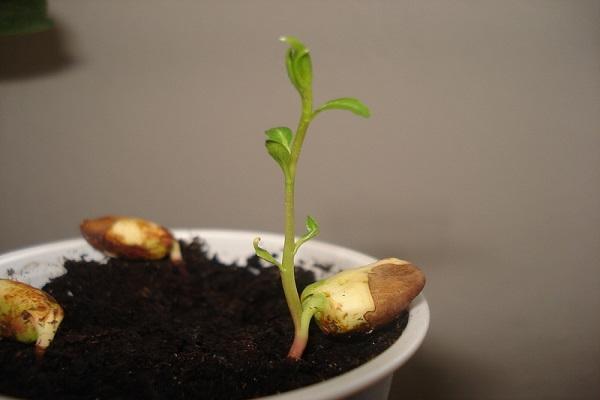
Almond grafting
You can graft the plant to cherry plum, plum and bird cherry. The procedure is carried out in the spring, when the trees are saturated with juice as much as possible.
Important! When fixing a twig on a tree, you should not hide the bud in the cut of the tree.
Cuttings
Steppe almond cuttings must be prepared in early July by cutting off the tops of the cuttings with a couple of nodes that are covered with wood. Then the procedure looks like this:
- the stalk is placed in a growth stimulator for 15-20 hours;
- rooting is performed in a cold greenhouse;
- landing is done in peat mixed with sand (1: 2);
- landing on a bed for ripening.
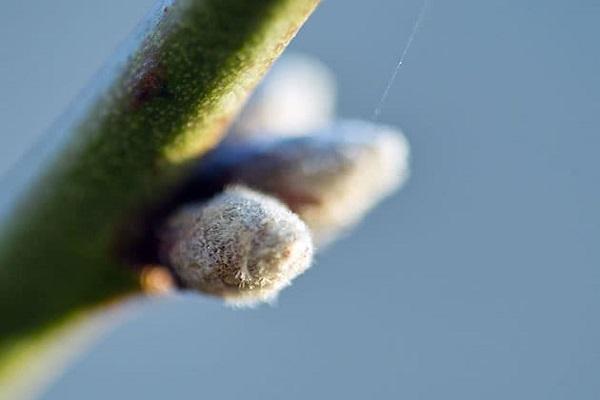
How to propagate by growth
With regular pruning of the steppe almond shrub, shoots are abundantly formed, which is also used for reproduction. It is preferable to dig it out in the second year, after the formation of the root system. Follow-up care is the same as for a one year old seedling.
Reproduction by layering
Wild almonds are undersized, so layering is not difficult. It is enough to fix the twig to the ground with a metal bracket. It is also watered, fertilized, loosened, and weeds removed. The next year, when the roots appear, the plant can be planted.
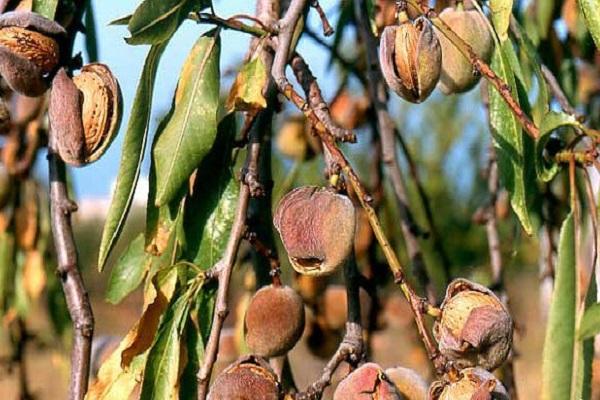
Decorative qualities
Steppe almonds are often used as a decorative addition in landscape design. But it is not recommended to plant it with taller plants. However, "little sakura" will beautifully complement the overall picture of flower beds or shrub decorations. Thanks to early flowering, almonds have time to manifest themselves in full force and allow other plants to show themselves.
